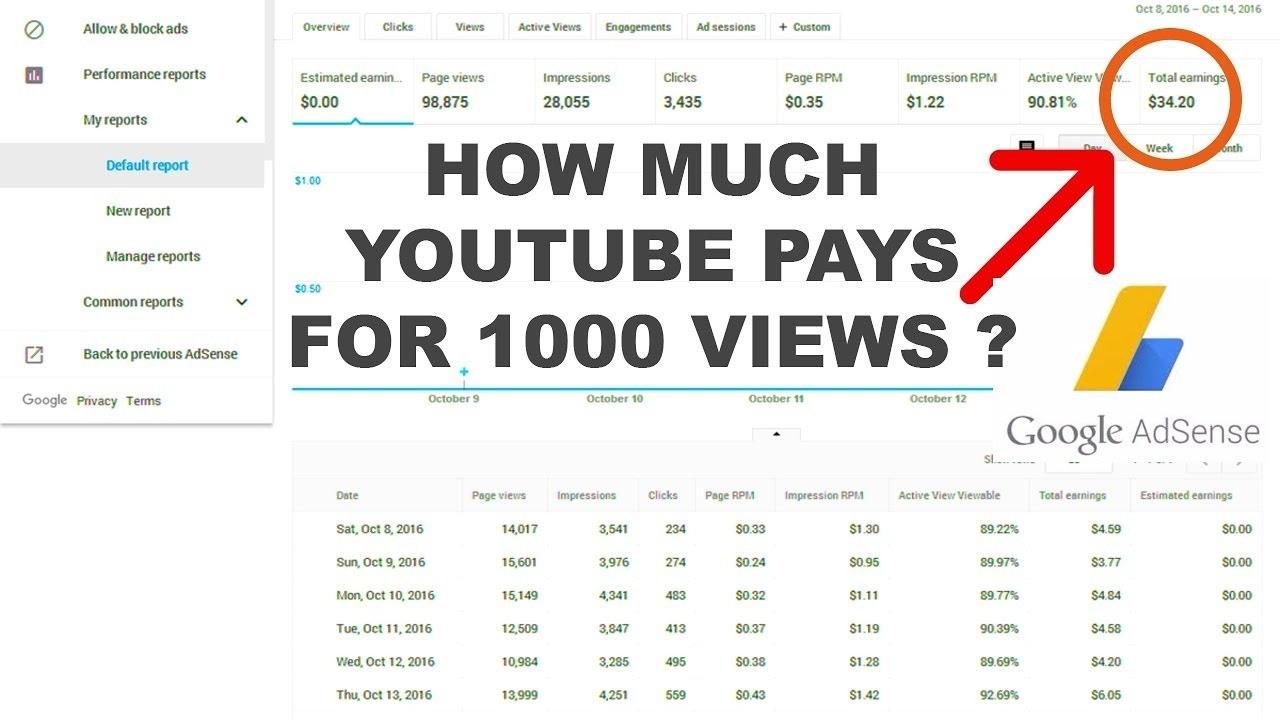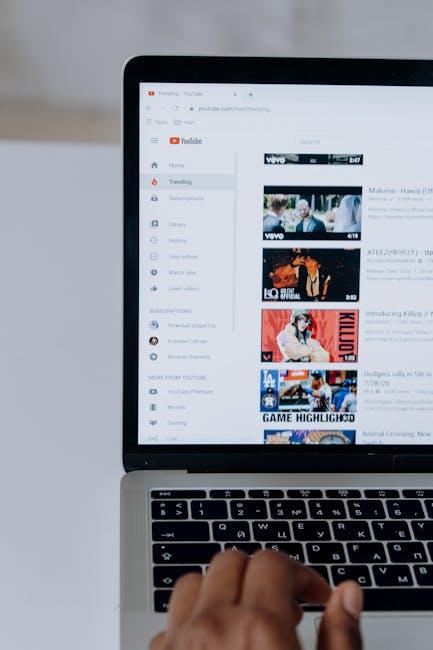Hey there, fellow dreamers and aspiring content creators! Have you ever found yourself wondering just when that sweet, sweet YouTube paycheck is going to come rolling in? The allure of turning passion into profit on the world’s biggest video platform is a tempting thought, isn’t it? But the road to your first earnings check isn’t quite as simple as just hitting “upload.” In this article, we’ll navigate the ins and outs of YouTube monetization—breaking down the requirements, the hidden gems of strategy, and most importantly, when you can expect to see those dollar signs. So grab your favorite snack, settle in, and let’s dive into the fascinating world of YouTube revenue! You might find that it’s not just about those pennies and dimes, but a whole lot more. Ready to roll? Let’s go!
– Understanding the YouTube Partner Program and Its Eligibility Requirements

Getting into the YouTube Partner Program (YPP) is like unlocking the door to the creator’s club where the money starts to flow. But hang on, it’s not just about making videos and hoping for the best. To grab that golden ticket, you’ll need to meet several eligibility criteria. First off, let’s talk about the big numbers: you need to have a minimum of 1,000 subscribers and 4,000 watch hours over the past year. That may sound daunting, but think of it like grabbing a few friends for a movie night—each subscriber is just another person wanting to come along for the ride! Also, don’t forget to have an AdSense account ready because that’s how you’ll get paid.
Now, let’s dive into some finer details that can make or break your journey. You’ll also need to adhere to YouTube’s community guidelines and copyright laws, showing that you’re not just in it for the quick bucks. Keep in mind that being in the YPP means having access to features like monetization, custom thumbnails, and community posts, making your channel all the more engaging! Here’s a convenient table to summarize the main requirements:
| Requirement | Details |
|---|---|
| Subscribers | 1,000 |
| Watch Hours | 4,000 in the last 12 months |
| AdSense Account | Must be linked |
| Community Guidelines | Compliance Required |
– The Path to Monetization: Growing Your Channel and Building an Audience

Growing your channel isn’t just about consistent uploads; it’s about fostering a community that genuinely engages with your content. Think of your channel as a cozy coffee shop where people come to enjoy a great brew and have meaningful conversations. To attract and build an audience, consider these surrounding elements:
- Authenticity: Be yourself! Audiences can sniff out inauthenticity from a mile away, so let your true personality shine.
- Engagement: Respond to comments, ask for feedback, and create polls. What better way to make your viewers feel valued?
- Quality Content: Invest time in editing and presentation. Think of it as giving your coffee a beautiful latte art; it makes a huge difference!
Once you create an engaging environment, you’re well on your way to monetization. But how do you scale that audience effectively? Here’s the scoop:
| Strategy | Description |
|---|---|
| Collaboration | Partner with other creators for shared audiences – like hosting a jam session! |
| SEO Optimization | Use keywords that resonate with your content, making it easier for viewers to find you. Think of it as tagging your coffee with the perfect roast level. |
| Analytics Review | Regularly check your analytics to understand what works – it’s like tasting your coffee to get the flavor just right! |
– Navigating Revenue Streams: Ad Sense, Sponsorships, and Merchandising

When diving into the YouTube world, many creators quickly discover that the pathway to financial success isn’t solely paved by one method. Instead, it’s often a harmonious blend of revenue streams that kickstart those sweet, sweet paychecks. You’ve got AdSense, a classic go-to, where you earn money based on clicks and impressions of ads displayed on your videos. Next up is sponsorships, where brands partner with you to promote products or services that resonate with your audience. Don’t underestimate this—it’s like being the cool kid in class who gets free snacks for sharing the latest game; brands are more than willing to invest in those who have that funky charm and compelling content. And then, let’s talk about merchandising. Creating and selling your own merchandise can really take things to the next level. Picture it this way: your fans are wearing your brand like a badge of honor, and every time they do, it’s like you’ve got your own walking billboard.
To give you a clearer picture, here’s a quick overview of what each revenue source typically entails:
| Revenue Stream | How It Works | Potential Earnings |
|---|---|---|
| AdSense | Income based on ad views | $0.01 – $0.03 per view |
| Sponsorships | Brand partnerships for promotions | $500 – $50,000 per deal |
| Merchandising | Selling branded products directly | Varies widely; could be $10 to $100+ profit/item* |
Think about it: each revenue stream boosts your income while giving your audience more ways to connect with you. It’s about creating an ecosystem where everyone benefits—fans get cool stuff, brands reach their target audience, and you get rewarded for your creativity. So why settle for just one source when you can mix, match, and maximize? It’s a savvy creator’s dream come true!
– Setting Realistic Expectations: How Long Until That First Paycheck?

When diving into the world of YouTube, it’s crucial to have a clear understanding of what you’re stepping into, especially when it comes to those sweet, sweet paychecks. Most creators find themselves in a whirlwind of excitement and anticipation, but here’s the kicker—patience is a virtue! From the day you post your first video, it can take some time before you see any financial rewards. Typically, after hitting that magical threshold of 1,000 subscribers and 4,000 watch hours over the past 12 months, you can apply to the YouTube Partner Program, which opens up revenue streams like ad placements. Essentially, you’re earning off views—but don’t expect the cash to start rolling in overnight.
So, how long should you realistically expect to wait for that first paycheck? Here’s the rundown:
- Content Quality: The better your content, the faster you’ll build an audience.
- Niche and Demand: Some niches are just more lucrative than others!
- Engagement Rates: Likes, comments, and shares can boost your visibility exponentially.
- Consistency is Key: Regular uploads help in retaining viewer interest.
Many creators report waiting anywhere from three to six months after meeting the eligibility criteria before seeing their first paycheck. Remember, YouTube is a long game, not a sprint, so focus on building a community and improving your content, and those paychecks will come. Just think of it like planting a garden—you can’t rush the growth, but with time and care, you’ll eventually reap the rewards!
Closing Remarks
And there you have it! The tantalizing world of YouTube monetization isn’t just a pipe dream; it’s a journey filled with creativity, dedication, and maybe a sprinkle of luck. Whether you’re just starting out or already on your way, remember that patience pays off. Like planting a seed and watching it grow, building a successful channel takes time and tender care.
So, if you’re eager to start seeing those YouTube paychecks roll in, keep creating, stay engaged with your audience, and don’t shy away from experimenting with your content. You never know which video might just become your golden ticket!
Thanks for diving into the nitty-gritty of YouTube earnings with us. Stay tuned for more insights and tips, and who knows? Your next upload could be the one that catapults you into the world of financial success. Happy filming, and may the views be ever in your favor!






































